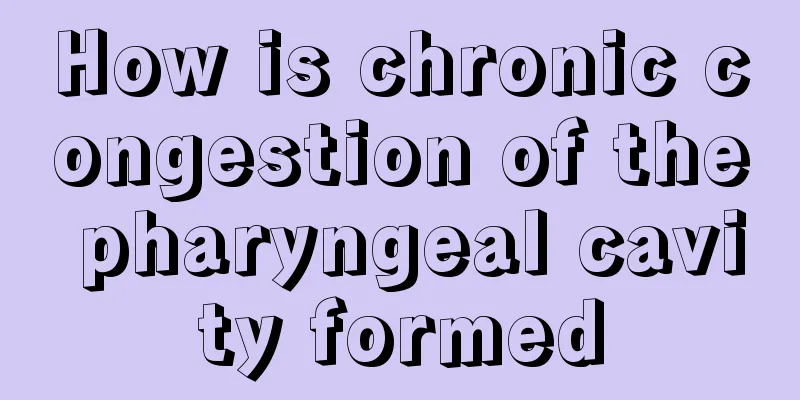What's up with the direction of blood circulation

|
Blood exists in many animals or human bodies, and the role of blood is very important. It is essential to transport nutrients and increase pressure to promote circulation. Blood can be seen in many places in our normal life, for example in hospitals or when you accidentally scratch yourself and bleed, you can see red blood. Let’s take a brief look at the direction of blood circulation. 1. Blood circulation is divided into systemic circulation and pulmonary circulation. Pulmonary circulation: right ventricle--pulmonary artery--capillary network in the lungs--pulmonary veins--left atrium Systemic circulation: left ventricle--aorta--capillary network throughout the body---superior and inferior vena cava--right atrium Blood circulation route: left ventricle→(arterial blood at this time)→aorta→arteries at all levels→capillaries (material exchange)→(become venous blood after material exchange)→veins at all levels→superior and inferior vena cava→right atrium→right ventricle→pulmonary artery→pulmonary capillaries (material exchange)→(become arterial blood after material exchange)→pulmonary veins→left atrium→finally return to the left ventricle and start a new round of circulation. Among them, the blood circulation from the left ventricle to the right atrium is called blood systemic circulation, and the blood circulation from the right ventricle to the left atrium is called blood pulmonary circulation. 2. Blood circulation begins in the left ventricle. After the blood is pumped out from the left ventricle, it flows through the aorta and several arterial branches derived from it, delivering the blood to the corresponding organs. The arteries branch out multiple times, their diameter gradually becomes thinner, and the number of blood vessels gradually increases, eventually reaching the capillaries, where they exchange substances with tissue cells through the intercellular fluid. The oxygen and nutrients in the blood are absorbed by the tissues, while the carbon dioxide and other metabolic products in the tissues enter the blood, turning arterial blood into venous blood. During this period, the diameter of the veins gradually becomes thicker and the number gradually decreases until finally all the veins converge into the superior vena cava and the inferior vena cava. The blood then returns to the right atrium, and from the right atrium to the right ventricle, thus completing the systemic circulation process. 3. The blood circulating in the human body can transport nutrients to all parts of the body, collect waste in the human body and excrete it out of the body. When blood flows out of the heart, it transports nutrients and oxygen to all parts of the body; when blood flows back to the heart, it transports carbon dioxide and other wastes produced by the body to the excretory organs and excretes them out of the body. The total blood volume of a normal adult is approximately 8% of body weight. Blood transports oxygen, food, nutrients and hormones throughout the body and carries metabolic waste products to the excretory organs. Blood can also protect the body by producing special proteins called "antibodies". Antibodies can stick to microorganisms and prevent their activity. Other cells in the blood then surround, engulf, and destroy these microorganisms. Blood can also coagulate into clots to help us stop bleeding wounds, prevent large amounts of blood loss and microbial invasion. The above is a relatively simple answer to the question about the direction of blood circulation. I hope that through such a detailed description, many people can understand the relevant information. We need to keep ourselves in good health so that we can challenge new things every day. Don't smoke, drink, or eat spicy food. It is also important to exercise moderately. |
<<: How to use the meridian tapping stick
>>: What does a blood test check?
Recommend
What causes cramp pain behind the ear
Few people probably pay attention to the skin beh...
What are the functions and effects of enzyme green plum, and what are its main characteristics?
I believe most people know that losing weight is ...
Which hospital is best for treating lymphoma
Lymphoma is a common disease in our lives. It is ...
What are the symptoms of lung metastasis from colorectal cancer
Due to the insidious nature of rectal cancer and ...
Does skin cancer cause lumps?
After suffering from skin cancer, only by fightin...
What are the symptoms of prostate cancer in the early stage? What are the manifestations of prostate cancer in the late stage?
The early symptoms of prostate cancer are not obv...
Midline lipoma
Our bodies will feel any problem no matter what h...
The nutritional value, efficacy and taboos of pineapple
In life, many people like to eat jackfruit, becau...
Are the hearts in the same position for men and women?
The heart is very important to everyone. Generall...
What are the dangers of tinnitus caused by ear vibration
The ear is one of our five senses. It is relative...
3 kinds of eye-protecting foods that office workers must eat
Working in front of a small screen all day is not...
How long can one live with advanced gastric cancer
The survival time of advanced gastric cancer vari...
What should I do if I have persistent dysmenorrhea?
Dysmenorrhea is common for most women. The main r...
Is a rusty iron pan poisonous?
Nowadays, many families use iron pans for cooking...
This is how you should handle a positive Mycoplasma pneumoniae antibody
Pneumonia is an extremely serious disease for chi...









